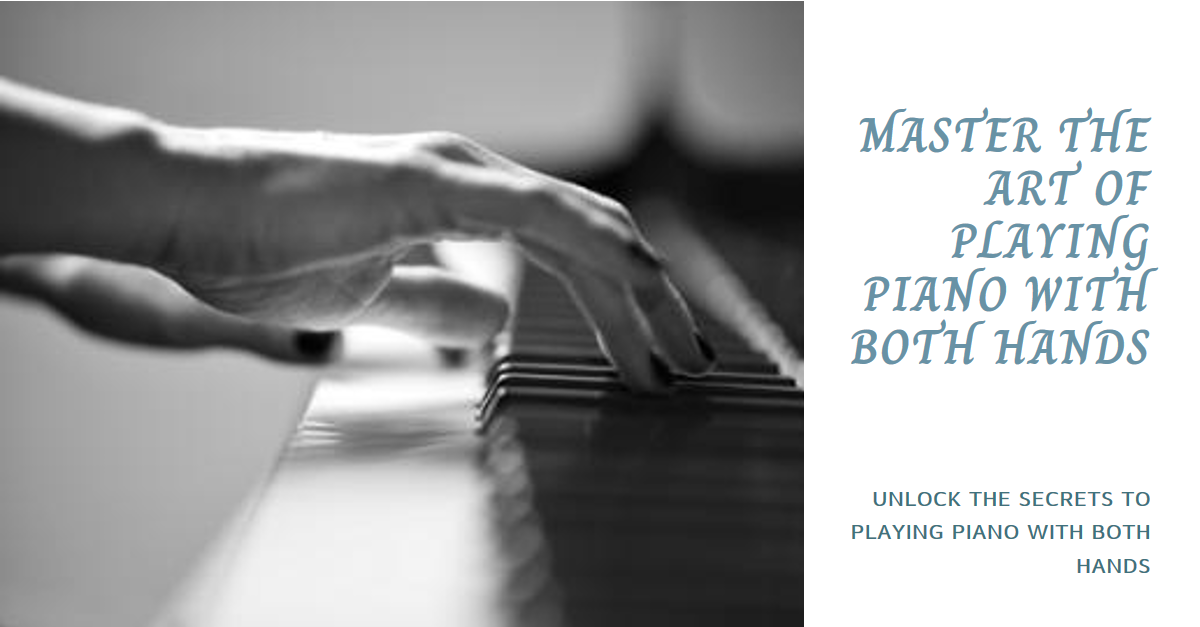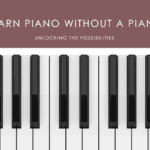The piano is a unique instrument that allows you to play melodies and harmonies simultaneously using both hands. However, coordinating the movements of both hands can be quite challenging for beginners. It takes time and consistent practice to develop the independence and synchronization to smoothly play different parts at the same time.
Mastering this skill unlocks the full potential of the piano and allows you to play complex, multi-layered pieces. Being able to use both hands together enriches the music you create and also enhances brain function.
This comprehensive guide will provide tips and exercises to help you successfully learn how to play piano with both hands.
Preparation
Before diving into playing with both hands, there are some fundamentals you need to have in place regarding posture, hand position, finger numbering, and reading music.
Posture and Hand Position

Proper posture and hand position are vital to enable fluid playing.
- Sit with a straight back, feet flat on the floor, and elbows at keyboard height
- Keep wrists neutral, inline with forearms
- Curve fingers gently as if holding an egg
- Play with fingertips, keep nails short
- Position hands over home row keys C through G
When I first started taking lessons, my teacher immediately corrected my hunched shoulders and tense wrists. Adjusting to the proper hand shape and arched fingers felt awkward, but improved my tone and flexibility.
Finger Numbering
- Each finger of both hands is assigned a number from 1 (thumb) to 5 (pinky)
- This standard system is used for fingerings in sheet music
- Become familiar with identifying each finger number
| Left Hand | Right Hand |
|---|---|
| 1 – Thumb | 1 – Thumb |
| 2 – Index finger | 2 – Index finger |
| 3 – Middle finger | 3 – Middle finger |
| 4 – Ring finger | 4 – Ring finger |
| 5 – Pinky | 5 – Pinky |
Reading Music
- Understand the musical staff, treble and bass clefs, notes, key signatures, time signatures, etc.
- Be able to read and play simple melodies one hand at a time before combining hands
Developing Coordination
When ready to start playing with both hands, begin with simple exercises and gradually increase the difficulty level.
Start with Simple Exercises
- Play the same single notes or chords together in both hands
- Play basic scales or melodies together one octave apart
- As these become comfortable, try exercises with different rhythms between hands
My first coordination exercise involved playing one-octave C major scales together very slowly. It sounded terrible at first – I had no concept of keeping a steady tempo between my hands.
Isolate and Practice Hands Separately
- Master each hand individually before combining
- Ensure accuracy and memorization of the separate parts
- Recognize the unique challenges for each hand
Tap It Out
- Tap rhythms out on a table before moving to the piano
- Speak/sing the rhythm to imprint it before adding notes
- This develops the inner beat and timing
Putting It All Together
When you have prepared the hands separately, start integrating them together at the piano.
Start Slowly
- Begin practicing hands together at a very slow tempo
- Focus on precision and smooth transitions between hands
- Increase speed gradually as coordination improves
Focus on Small Sections
- Break the music down into shorter segments
- Master each segment hands together before moving ahead
- Short sections are easier to coordinate than long pieces
Use a Metronome
- Practicing with a metronome establishes steady tempo and rhythm
- Provides pacing and accuracy when coordinating hands
Listen and Adjust
- Carefully listen to the sound as you play
- Focus on rhythmic and dynamic expression between hands, paying attention to clarity in the production of successive notes.
- Precision develops through active listening
Even when I could stumble through a piece at a snail’s pace, it sounded disjointed and messy. That’s when I realized how crucial listening and adjusting is for truly coordinating both hands.
Tips and Tricks
Here are some additional tips to help conquer playing piano with both hands:
- Practice regularly – Frequent, mindful practice is key for progress
- Be patient – Building coordination takes time and consistent effort
- Enjoy yourself – Have fun growing your skills at every level
- Consider lessons – A teacher provides feedback to advance faster
- Choose appropriate music – Start with simpler pieces within your ability
| Difficulty | Example Pieces |
|---|---|
| Beginner | Ode to Joy, Heart and Soul |
| Intermediate | Für Elise, Canon in D |
| Advanced | Fantaisie-Impromptu, Moonlight Sonata |
Conclusion
The day both my hands flowed together when sight reading a new piece for the first time was such an accomplishment. Mastering this skill took persistence, but was so rewarding.
Playing the piano with both hands opens up exciting musical possibilities but requires developing new neural pathways and muscle memory. Set yourself up for success by laying the proper foundation of posture, theory, and sight reading. Apply the techniques for hands together practice outlined here. With regular, mindful practice sessions, you can enjoy creating rich music on the piano using coordinated two hand playing.
The journey brings immense satisfaction as your skills progress. Be patient with yourself, have fun exploring this beautiful instrument, and let the music flow through both hands!
Choosing Beginner-Friendly Pieces
When starting to play piano with both hands, select beginner-friendly pieces that set you up for success. Here are some elements to look for:
- Very small hand shifts – Minimal movement between hand positions
- Slow to moderate tempo – Slower pieces are easier to coordinate
- Repeated patterns – Consistent rhythmic patterns between hands
- Preparatory exercises – Lead-in exercises to practice technique required
- Sparse textures – Melody and simple accompaniment line
Refer to beginner piano method books which offer ideal progressive pieces with these features. Here are some great options:
- Alfred’s Basic Adult Piano Course Lesson Book Level 1
- Bastien Piano Basics Primer Level
- Faber Piano Adventures Lesson Book Primer Level
Also, don’t shy away from simplifying pieces beyond your current ability. Strip down embellishments and reduce notes per hand to make songs accessible as you continue to advance your coordination skills.





